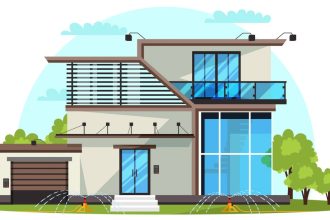Your roof doesn’t just protect your home from the elements – it adds value and style to your property too. Despite this, many homeowners must take adequate steps to keep their roofs in good condition. Roof maintenance is crucial if you want to preserve your investment and avoid significant repairs down the road that could cause an expensive headache. Whether you’re a first-time homeowner or someone who’s been around the block, this guide will help you learn how easy it can be to protect and maintain your roof for years to come.
1. Schedule Regular Inspections
Regular inspections play a vital role in maintaining the health of your roof. The West Columbia roofing and roof maintenance company recommends that you schedule inspections at least twice a year, typically in the spring and autumn or after severe weather conditions. These inspections will allow you to identify and address minor issues before they escalate into major problems that can result in costly repairs or replacements.
Professional roof inspectors will have the knowledge and experience to spot signs of damage such as missing, cracked, or curling shingles, clogged gutters, loose flashing, or moss and algae growth. Remember, the goal of these regular inspections is preventive maintenance to help extend the lifespan of your roof and maintain its optimal performance.
2. Clean Your Gutters and Downspouts Regularly
Over time, gutters can become clogged with leaves, twigs, and other debris, hindering their ability to divert water from your home effectively. If water gets backed up, it can lead to overspilling, seeping into the roof and walls, causing internal dampness and mold problems. Furthermore, the additional weight of water-logged debris can strain the brackets, potentially causing the guttering to sag or break.
Therefore, cleaning your gutters at least twice a year, in late spring and early autumn, is recommended to ensure they function correctly. Consider using a sturdy ladder, protective gloves, a gutter scoop or small plastic shovel to remove the bulk of the debris, and a garden hose to flush out the downspouts and check for leaks.
3. Trim Trees and Clear Debris
Trees form part of a home’s landscape, providing shade and protection from the sun. However, if they’re too close to your roof, their branches can cause considerable damage due to excessive moisture or debris. That’s why having them regularly maintained by an arborist is essential – they can trim the branches to keep them at a safe distance.
It’s also essential to regularly clear any debris, such as leaves or pine needles, from your roof and gutter, as these can trap moisture and lead to moss or algae growth, which can damage shingles and cause leaks. Again, you should use a sturdy ladder and a rake or leaf blower.
4. Invest in Preventative Maintenance
A range of services are available to help protect your roof from the elements, including putting on protective coatings that can increase its durability and weather resistance. Additionally, installing ventilation systems helps keep the temperature inside your home consistent throughout the year, reducing any pressure on the roof and prolonging its life.
If you need clarification on what kind of roof maintenance is best for your home, then speaking to a professional is always a good idea. A trusted roofing expert can accurately assess what needs to be done and recommend the most suitable preventative measures for your property.
5. Make Any Necessary Repairs
If any issues are identified during an inspection or cleaning, making the necessary repairs as soon as possible is crucial. A roof that isn’t in good condition can cause a range of problems for your home, from increased energy bills due to lack of insulation to leaks and damp, so don’t delay if you want to avoid further damage.
Depending on the extent of the issue, you may need to hire a roofer to carry out any repairs. They will have the necessary expertise and experience to identify any underlying problems and the skills and tools required to fix them safely and efficiently. However, if you feel confident enough and the job is relatively minor, you can make the repairs yourself.
6. Choose the Right Materials for Your Climate
Different materials will have different levels of performance and durability, so it’s essential to make sure you choose something suitable for your local environment. For example, live in a region that experiences extreme heat or cold temperatures. Metal might be a better option than asphalt shingles, as it is more resistant to temperature fluctuations. Likewise, you should also factor in the amount of rain and snow your area typically experiences, as certain materials are more resilient when exposed to moisture.
By following these simple steps, you can enjoy the peace of mind of having a safe and secure roof over your head for many years. Of course, staying up-to-date with any local regulations or building codes that may apply to your property is also essential. This will ensure that any inspections, maintenance tasks, or repairs you undertake meet the necessary standards and provide the best protection for your home.















